Brunei Darussalam is home to a diverse array of birdlife, ranging from large seabirds to small passerines. With over 350 species of birds recorded in the country, Brunei Darussalam is a paradise for birdwatchers.
The country’s tropical climate and diverse habitats provide an ideal environment for a wide array of birds, from the majestic hornbills and dazzling kingfishers to the colorful parrots and hummingbirds.
This article will provide an overview of the birds of Brunei Darussalam, including their habitats and behavior.
1. White-Breasted Woodswallow
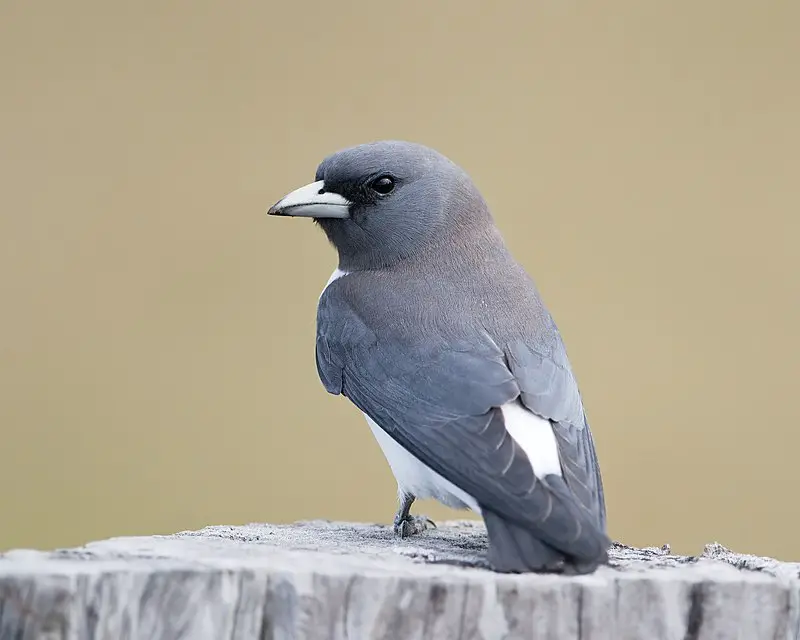
The White-breasted Woodswallow is a medium-sized passerine bird found in the Andaman Islands, Indonesia and Northern Australia.
Its name may be misleading as it does not belong to the family of true swallows but rather belongs to Artamidae which also includes butcherbirds, currawongs and Australian magpie.
These birds are mainly greyish brown with white belly patch and long wings having two pale bars on them.
They feed on insects like ants, beetles etc., captured from foliage or air during flight.
Breeding season for this species starts from October till December when they build their cup shaped nests out of twigs near tree trunks or branches usually high up in trees for protection against predators such as snakes or raptors.
Male woodswallows can often been seen singing loudly while displaying its aerial maneuvering capabilities trying to attract potential mates.Scientific classification:
| Kingdom | Animalia |
| Phylum | Chordata |
| Class | Aves |
| Order | Passeriformes |
| Family | Artamidae |
| Genus | Artamus |
| Species | A. leucorynchus |
2. Painted-Snipe
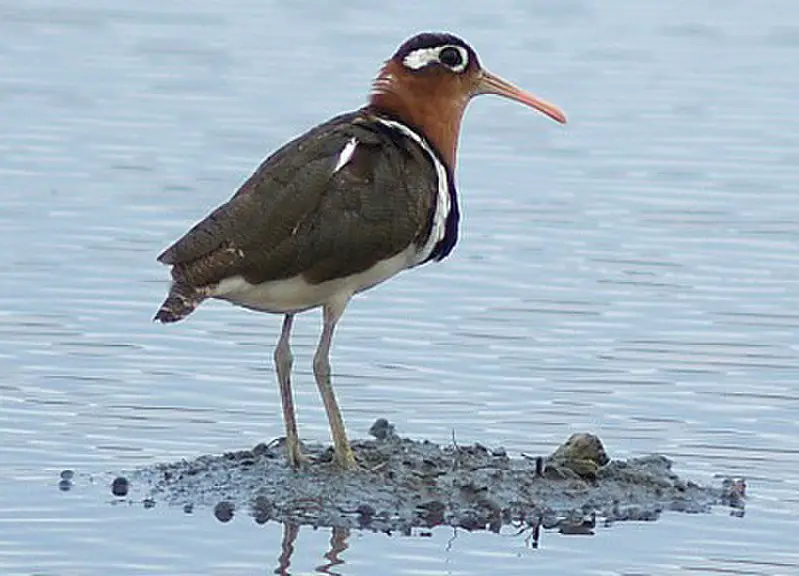
Painted snipes are beautiful and unique wading birds found in the Rostratulidae family. They have short legs, long bills, and a striking plumage which distinguishes them from true snipes.
Males tend to be smaller than females with duller overall coloration. There are three species of painted snipe.
The Greater Painted Snipe, Lesser Painted Snipe, and Australian Painted Snipe – all three have different habitats ranging from wetland pools to grasslands or mangroves depending on their region.
These birds feed mainly on earthworms but also consume insects, crustaceans and plant material when available.
As they rely heavily on wetlands for breeding purposes it is important that we protect these precious habitats so that this special bird can continue to thrive.Scientific classification:
| Kingdom | Animalia |
| Phylum | Chordata |
| Class | Aves |
| Order | Charadriiformes |
| Suborder | Thinocori |
| Family | Rostratulidae Coues, 1888 |
3. Glareolidae
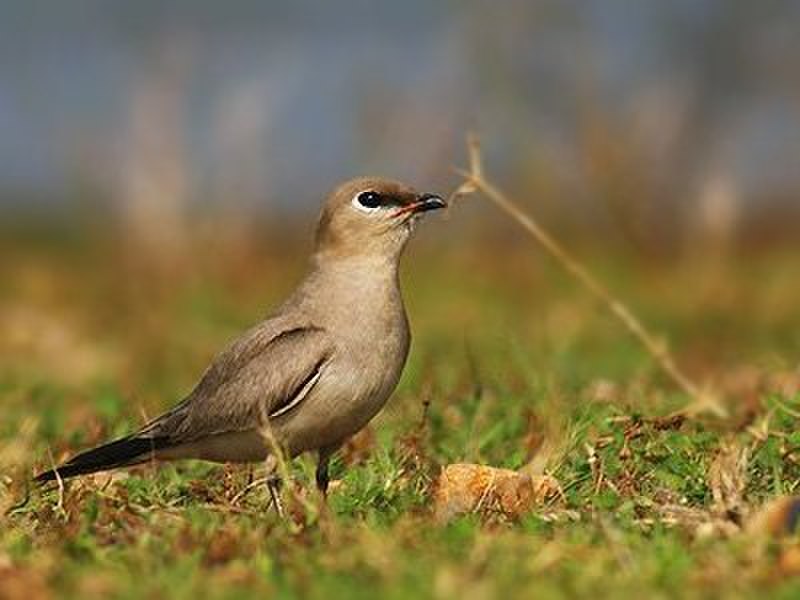
Glareolidae is a family of wading birds, consisting of four genera and 17 species. They are distinguished from other charadrii by their long bills which have a slight downward curve.
Glareolidae live around open grasslands and deserts, where they hunt for insects using the bill to probe into soil or vegetation.
Most species are found in Africa but two pratincoles inhabit parts of Europe and Asia as well.
Coursers tend to be larger than pratincoles with longer legs allowing them to run quickly across sandy dunes while feeding on small animals like lizards or spiders.
Pratincoles feed mainly on flying insects, snatching them out of midair with great agility during flight.
All glareolids share unique features such as large eyes that help it spot prey at night easily making this group one interesting bird family.Scientific classification:
| Kingdom | Animalia |
| Phylum | Chordata |
| Class | Aves |
| Order | Charadriiformes |
| Suborder | Lari |
| Family | Glareolidae CL Brehm, 1831 |
4. Stone-Curlew

Stone-curlews, also known as dikkops or thick-knees, are a family of birds that have adapted to live in tropical and temperate regions throughout the world.
They can be found in Africa, Asia and Australia with two or more species per region. Despite being classified as waders, most prefer dry arid habitats over moist wetlands.
Stone-curlews typically have long legs which help them navigate through their preferred terrain efficiently; some species even stand at an impressive height when standing on those long legs.
Additionally they feature cryptic plumage which helps them blend into their surroundings while hunting for prey such as insects and small mammals like rodents.
These unique bird’s calls are easily recognizable; it has been said that hearing one is similar to listening to someone whistling ‘Keee Weee’.Scientific classification:
| Kingdom | Animalia |
| Phylum | Chordata |
| Class | Aves |
| Order | Charadriiformes |
| Suborder | Chionidi |
| Family | Burhinidae Mathews, 1912 |
5. Eurylaimidae
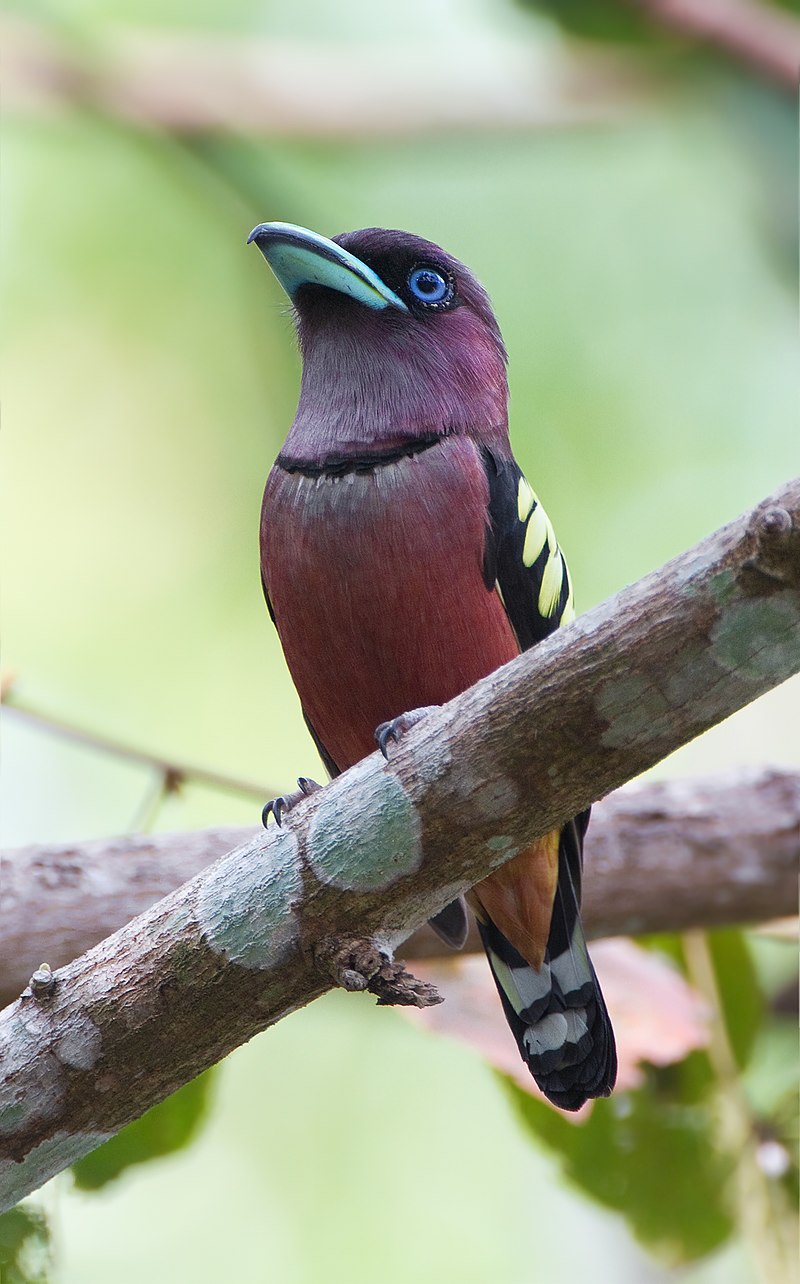
The Eurylaimidae family of birds is a diverse group, found in the eastern Himalayas all the way to Indonesia and Philippines.
They are suboscine passerines that have been known for their bright colours and broad heads.
Majority of these species live in tropical forests or wetlands, where they feed on small invertebrates like insects and worms.
Some specific species such as drongos use mimicry calls to communicate with other animals while most eurylaimids sing beautiful songs during mating season or territorial disputes.
In addition, many members of this family can actively hunt prey using aerial manoeuvres which make them interesting study subjects for ornithologists around the world.Scientific classification:
| Kingdom | Animalia |
| Phylum | Chordata |
| Class | Aves |
| Order | Passeriformes |
| Superfamily | Eurylaimoidea |
| Family | Eurylaimidae Lesson, 1831 |
6. Asian Glossy Starling
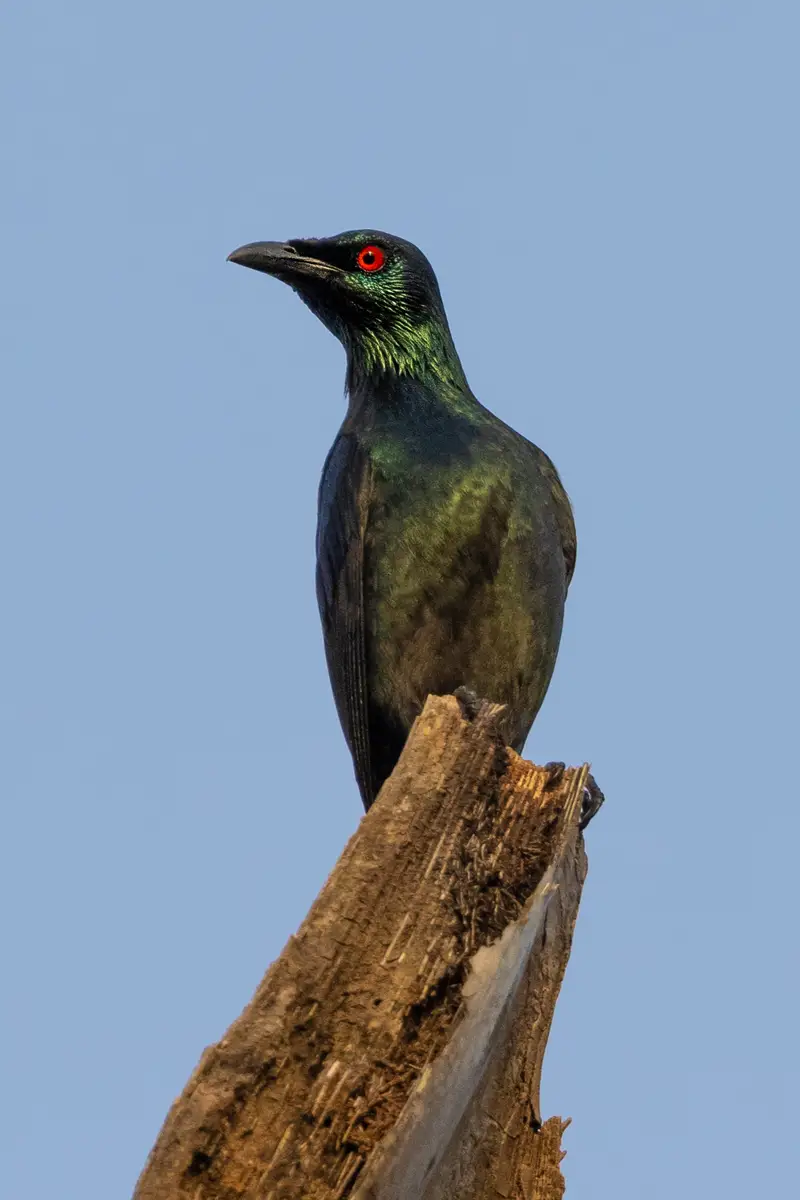
The Asian glossy starling is a small bird with a beautiful iridescent plumage. It has black feathers on its head, neck and wings that have an intense blue-green sheen in the sunlight.
Its tail feathers are tipped white and it also sports yellow legs and feet. The female of this species differs from the male by having duller colors overall as well as paler underparts than the males do.
This species can be found throughout parts of Bangladesh, India, Indonesia, Malaysia Myanmar Philippines Singapore Taiwan (introduced)and Thailand living mainly in subtropical or tropical moist lowland forest habitats but they can also be spotted inhabiting mangrove forests too.
They feed mostly on insects such as grasshoppers which they catch while flying through their natural environment but will sometimes eat fruits when available to them too.Scientific classification:
| Kingdom | Animalia |
| Phylum | Chordata |
| Class | Aves |
| Order | Passeriformes |
| Family | Sturnidae |
| Genus | Aplonis |
| Species | A. panayensis |
7. Malaysian Pied Fantail
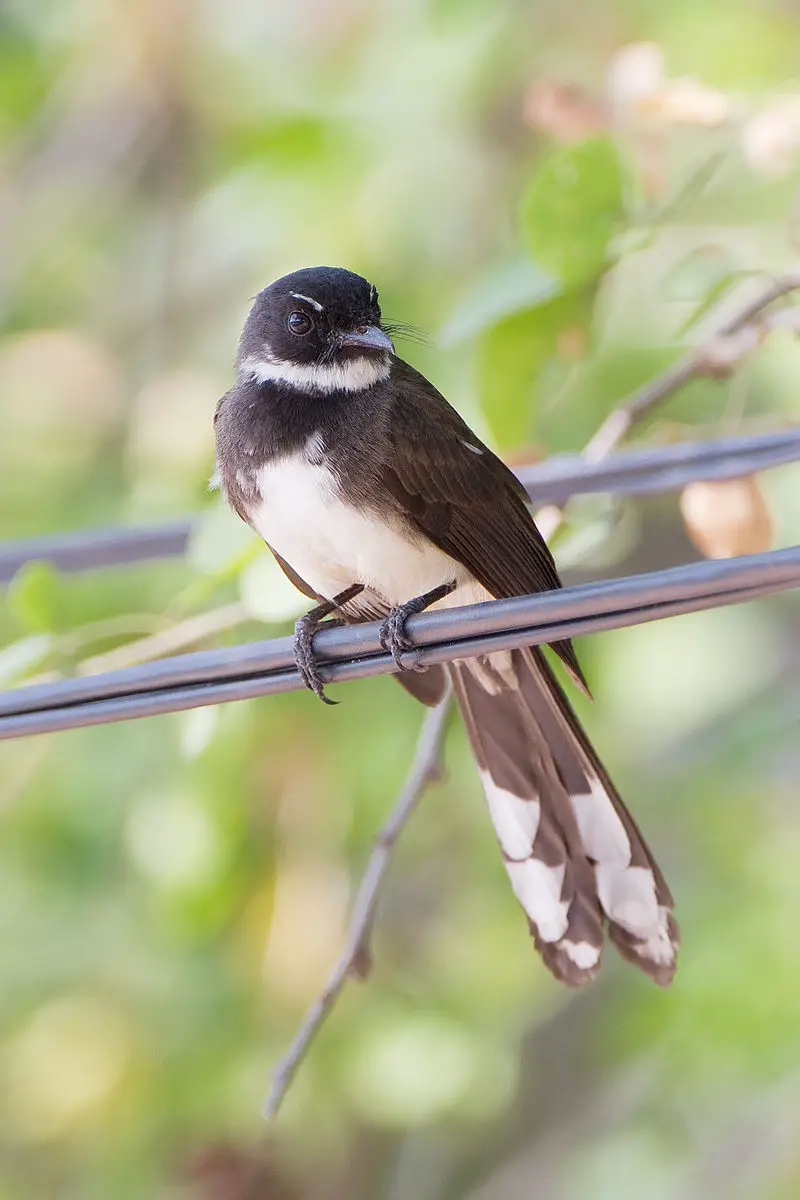
The Malaysian Pied Fantail is a species of bird in the fantail family found across South East Asia. It’s often referred to as ‘murai gila’, which translates to “crazy thrush” in Malay.
This small but beautiful bird has white and black feathers with an orange-red tail that fans out into two distinct points when it flies.
They inhabit mostly subtropical or tropical moist lowland forests and eat insects they catch while foraging among foliage near water sources such as rivers or streams.
The Malaysian Pied Fantail can also be spotted in gardens, parks, forest edges and other open habitats where there are plenty of trees around them providing food and shelter from predators.Scientific classification:
| Kingdom | Animalia |
| Phylum | Chordata |
| Class | Aves |
| Order | Passeriformes |
| Family | Rhipiduridae |
| Genus | Rhipidura |
| Species | R. javanica |
8. Asian Red-Eyed Bulbul
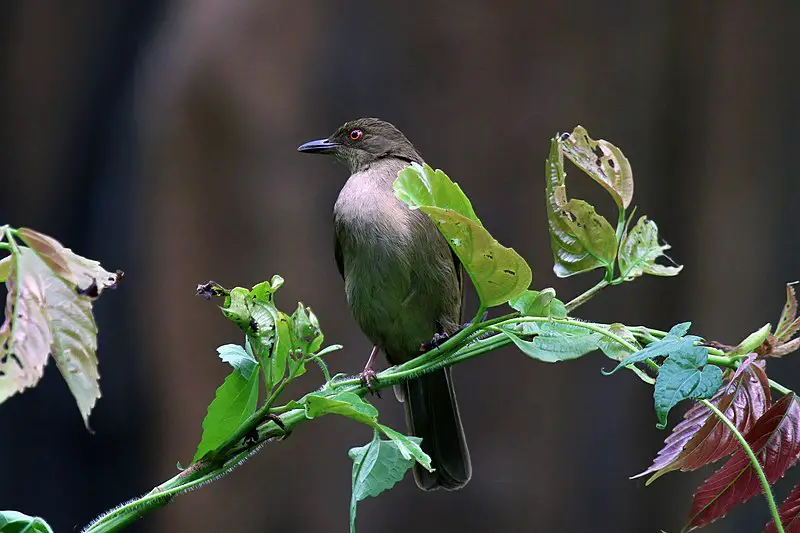
The Asian red-eyed bulbul is a passerine bird belonging to the bulbul family. It has an expansive range, inhabiting lowland forests in Malaysia, Sumatra and Borneo.
This species can be identified by its distinctive chestnut brown plumage, bright red eyes and black forehead crest.
They are somewhat similar in appearance to other bulbuls but have a different call which consists of short chirps interspersed with whistles.
These birds form small flocks when foraging for food such as fruits or insects on the ground or high up in trees and shrubs.
Though they prefer living in dense vegetation near water sources, they may also be found around human habitations where there are plenty of food sources available year-round such as gardens and farms.
The Asian Red-Eyed Bulbuls’ diet includes berries, seeds grains invertebrates like crickets & grasshoppers making them beneficial garden visitors.Scientific classification:
| Kingdom | Animalia |
| Phylum | Chordata |
| Class | Aves |
| Order | Passeriformes |
| Family | Pycnonotidae |
| Genus | Pycnonotus |
| Species | P. brunneus |
9. Bar-Bellied Cuckooshrike
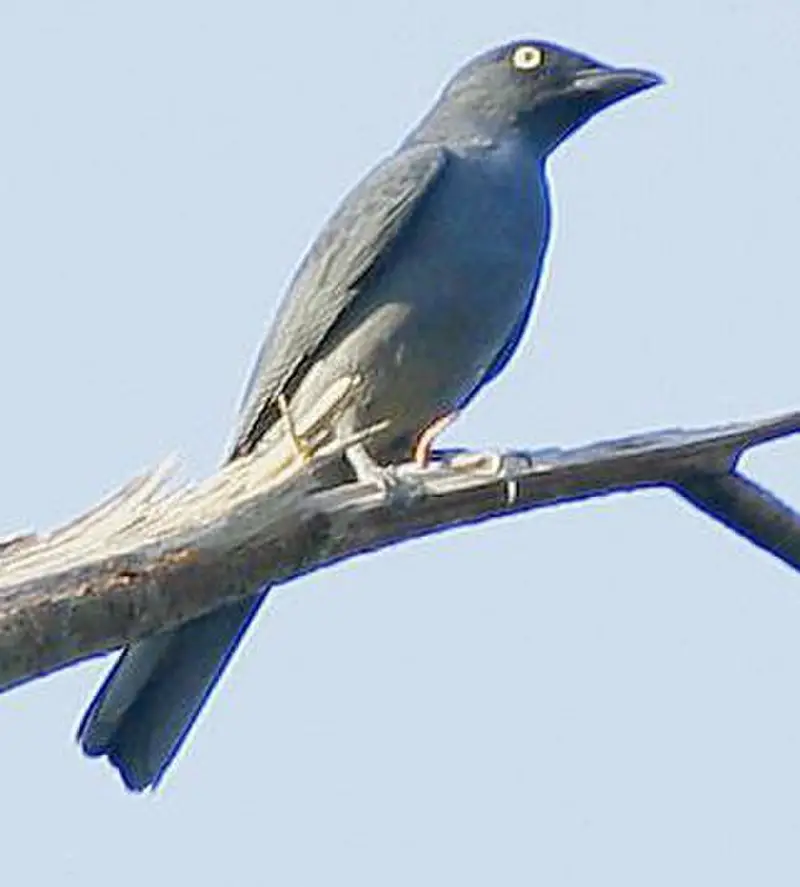
The Bar-bellied cuckooshrike is a species of bird belonging to the Campephagidae family. It can be found in Thailand, Malaysia, Indonesia and the Philippines inhabiting mangrove forests, dry forest, swamp forest and secondary growth areas.
Its plumage varies depending on its subspecies with different amounts of barring present on their underparts.
The International Union for Conservation of Nature (IUCN) has classified it as Least Concern due to its wide distribution range but there are still threats from habitat destruction that could affect populations over time.
This colourful bird makes an interesting addition to any enthusiast’s list.Scientific classification:
| Kingdom | Animalia |
| Phylum | Chordata |
| Class | Aves |
| Order | Passeriformes |
| Family | Campephagidae |
| Genus | Coracina |
| Species | C. striata |
Also Featured In: Most Common Birds in Negros, Mindoro Birds You Should Know
10. Bar-Winged Flycatcher-Shrike
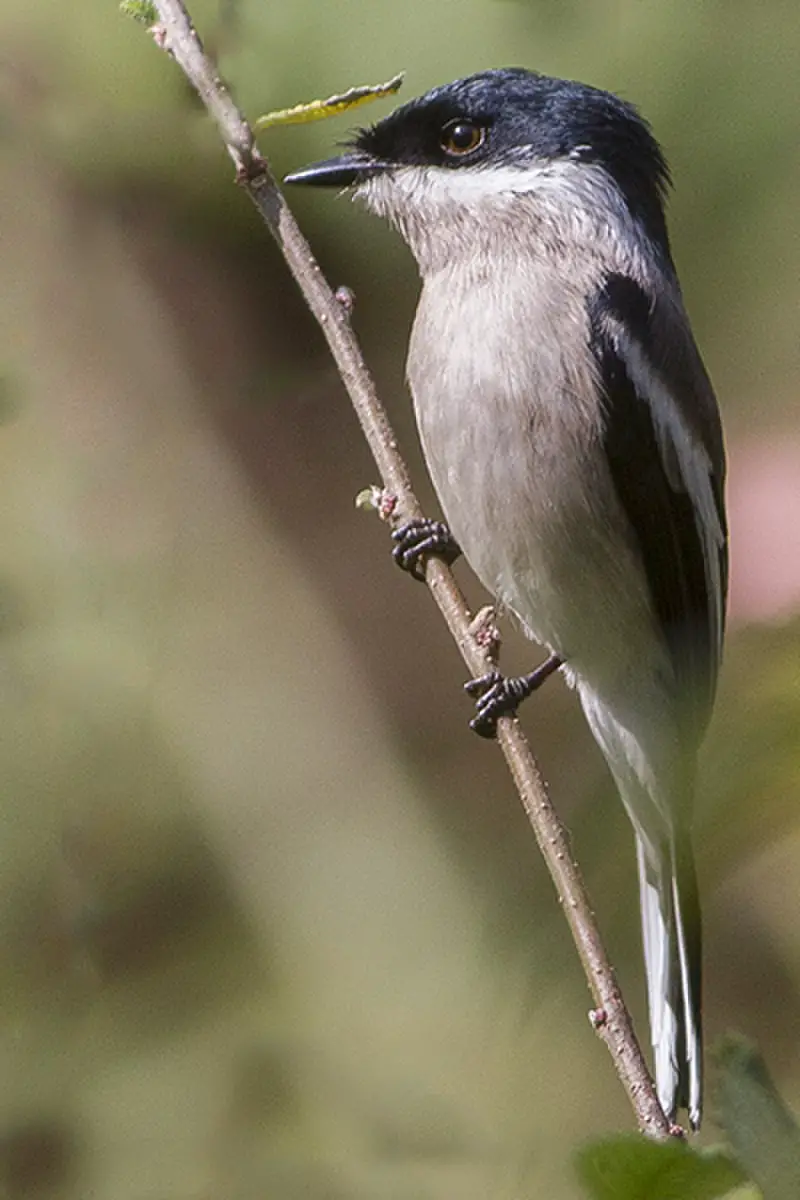
The Bar-winged Flycatcher-Shrike is a small passerine bird found in the forests of tropical southern Asia, ranging from the Himalayas and hills of India to Indonesia.
These birds inhabit mid-canopy levels in the forest, often joining mixed species flocks while they search for food.
With its distinctive pattern of black and white plumage on its head and wings, this flycatcher can be easily identified by experienced bird watchers.
They are mainly insectivorous birds that feed upon insects such as moths, beetles and flies which they capture using their sharp bill or talons during flight.
The bar-winged flycatcher has adapted well to life in these woodlands with an agile nature allowing it to navigate quickly through dense foliage when searching for prey or evading predators.Scientific classification:
| Kingdom | Animalia |
| Phylum | Chordata |
| Class | Aves |
| Order | Passeriformes |
| Family | Vangidae |
| Genus | Hemipus |
| Species | H. picatus |
11. Ashy Tailorbird
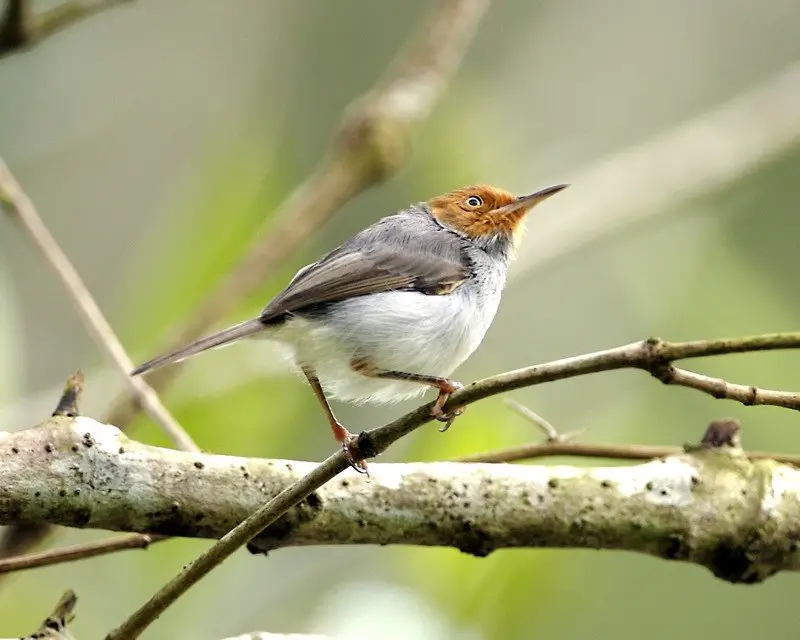
The ashy tailorbird is a species of bird found in parts of Southeast Asia such as Brunei, Indonesia, Malaysia and Vietnam. It has distinctive rufous crowns that make it easy to identify among other birds.
This small passerine typically inhabits subtropical or tropical lowland forests and mangrove swamps.
They are usually seen singly or in pairs foraging on the ground for insects and larvae, which they pluck out using their pointed beaks.
The males also have an elaborate courtship ritual involving song-and-dance displays accompanied by tail fanning while perched at the tops of trees.
These energetic little birds pose no threat to humans but can prove beneficial with many pest control services offered during their busy breeding season.Scientific classification:
| Kingdom | Animalia |
| Phylum | Chordata |
| Class | Aves |
| Order | Passeriformes |
| Family | Cisticolidae |
| Genus | Orthotomus |
| Species | O. ruficeps |
12. Blue-Banded Pitta
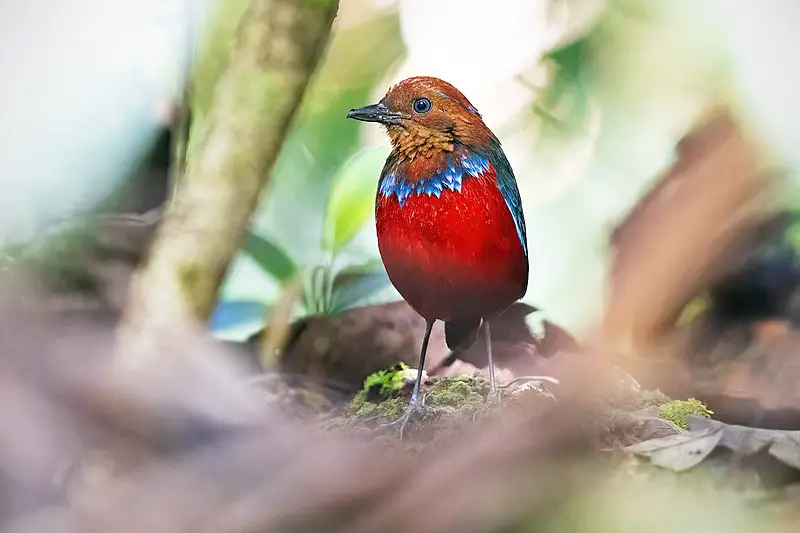
The Blue-banded Pitta is a vibrant and beautiful bird species, native to the island of Borneo. It has an olive green upper body with bright blue bands around its wings and tail feathers, while its underside is yellowish-orange in color.
This unique combination of colors make it one of nature’s most eye catching birds. The Blue-banded pitta prefers lowland forests for nesting areas as well as primary forest habitats such as mangroves or secondary growth forests for feeding purposes.
Unfortunately, this species is threatened by habitat loss due to deforestation activities occurring throughout much of Borneo so conservation efforts are necessary if we hope to save them from extinction.Scientific classification:
| Kingdom | Animalia |
| Phylum | Chordata |
| Class | Aves |
| Order | Passeriformes |
| Family | Pittidae |
| Genus | Erythropitta |
| Species | E. arquata |
Also Featured In: Birds that Live in Borneo Island,
13. Ashy Drongo
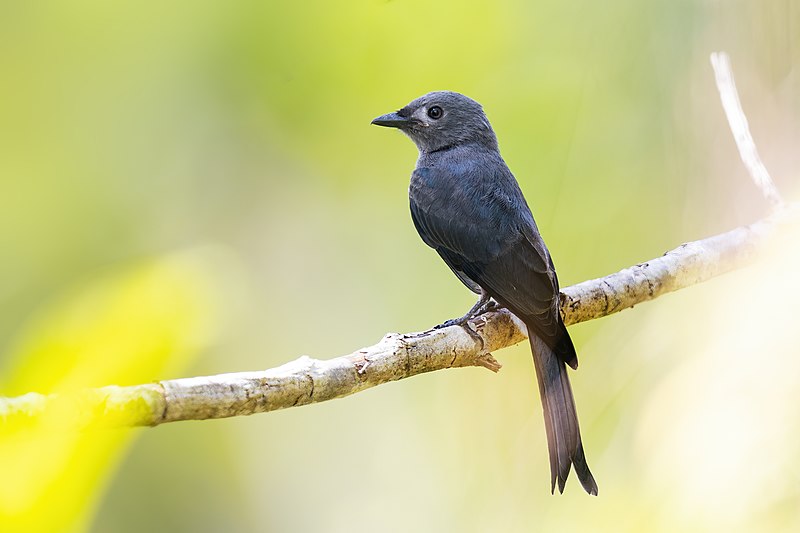
The Ashy Drongo is a species of bird belonging to the drongo family Dicruridae. It has a mainly dark grey plumage and an impressively long, deeply forked tail.
Its distribution across South and Southeast Asia is varied with populations that differ in their shade of grey as well as migration patterns, size or presence of white patches around the eyes.
This medium-sized passerine measures up to 25 cm lengthwise and weighs around 40 gm on average but can reach up to 70 gm at times.
These birds are known for their aerial acrobatics while hunting insects mid-air which makes them quite popular among birders who come from far off places just to catch glimpses of these beautiful creatures in flight.Scientific classification:
| Kingdom | Animalia |
| Phylum | Chordata |
| Class | Aves |
| Order | Passeriformes |
| Family | Dicruridae |
| Genus | Dicrurus |
| Species | D. leucophaeus |
Also Featured In: Common Birds in Kerala, Birds of Khao Yai National Park
14. White-Breasted Waterhen
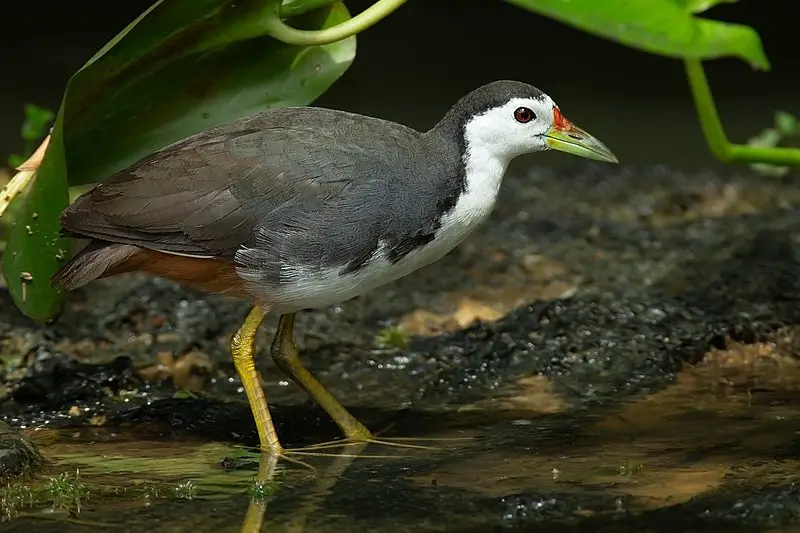
The White-breasted Waterhen is a stunning species of bird from South and Southeast Asia. It has a striking appearance, with its dark slaty plumage contrasted by the clean white of its face, breast and belly.
This bold waterbird can often be seen slowly walking around marshes or even drains near busy roads with its tail held upright in an unmistakable pose.
They are omnivores which feed on both plants and small animals such as insects and invertebrates.
The White-breasted Waterhen plays an important role in their ecosystems as they help to keep it balanced by consuming pests that could potentially cause damage to crops or other plant life if left unchecked.Scientific classification:
| Kingdom | Animalia |
| Phylum | Chordata |
| Class | Aves |
| Order | Gruiformes |
| Family | Rallidae |
| Genus | Amaurornis |
| Species | A. phoenicurus |
15. Zebra Dove
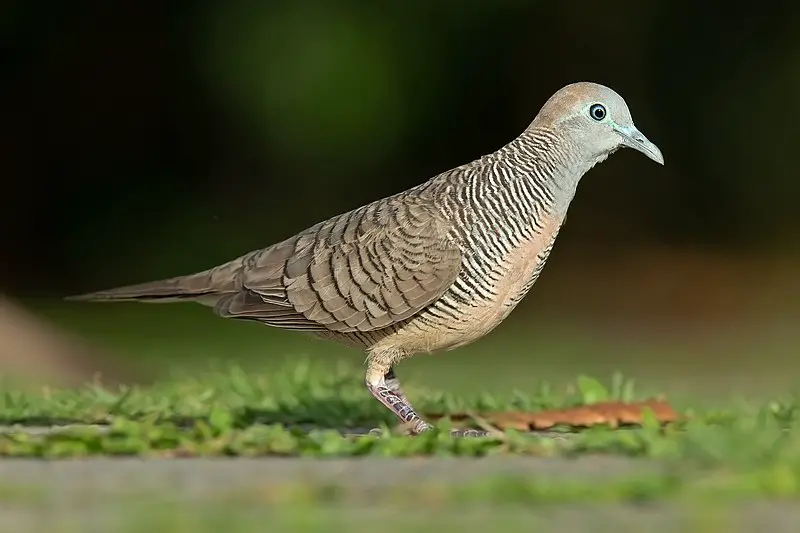
The Zebra Dove is a species of bird belonging to the Columbidae family. It can be found in Southeast Asia, and has predominantly brownish-grey feathers with black-and-white barring.
This dove stands out for its soft, pleasant cooing calls that sound like staccato notes when heard together. George Edwards first described it in 1743 as part of his English naturalist work on birds.
They are small animals with long tails, making them easily identifiable even from afar due to their distinct color patterning.
These doves prefer open woodlands or grassy areas near human settlements where they feed on seeds and insects while nesting close by but still far enough away from disturbance caused by humans or other animals who might disrupt their habitat.
The zebra dove is considered an important symbol among some Asian cultures representing love & beauty , reflecting how this little creature manages to capture people’s hearts wherever it goes.Scientific classification:
| Kingdom | Animalia |
| Phylum | Chordata |
| Class | Aves |
| Order | Columbiformes |
| Family | Columbidae |
| Genus | Geopelia |
| Species | G. striata |
16. Black Hornbill
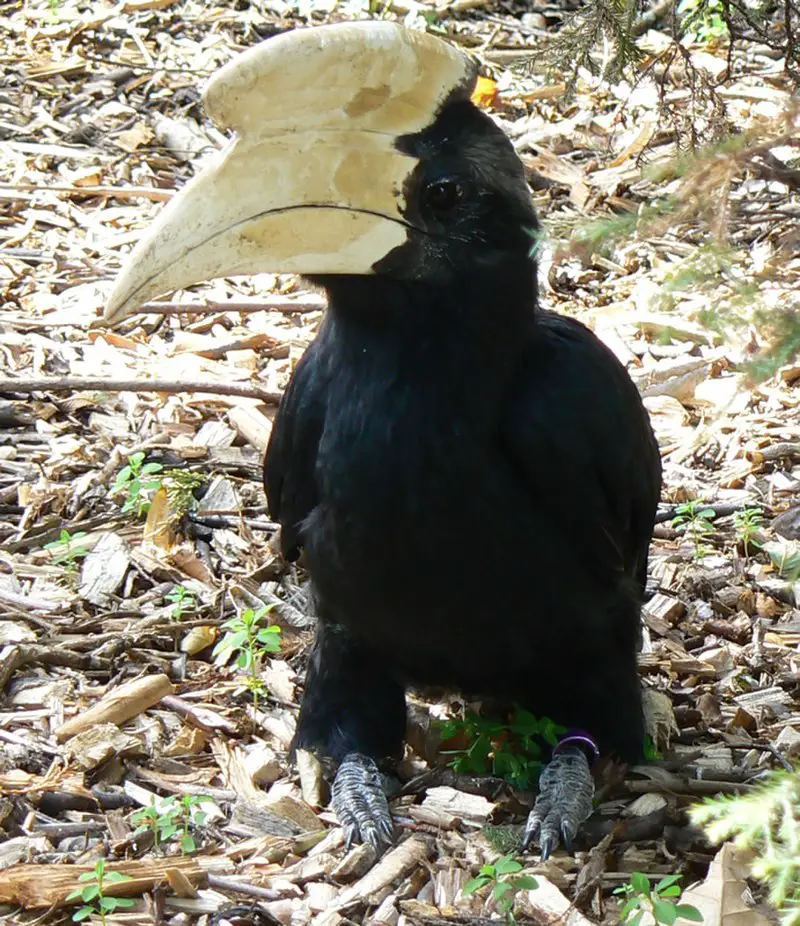
The Black Hornbill is an impressive species of bird found within Southeast Asia. Its distinctive black body and casque-shaped beak make it a truly striking creature.
Unlike other hornbills, the Black Hornbill has quite specific requirements when it comes to breeding and nesting; they only do so if there is an ample supply of fruit in their environment.
These birds are frugivores, meaning that fruits form a major part of their diet as well as being important for the successful rearing of younglings during mating season.
They mainly inhabit tropical rainforests but have been known to roam into more open areas on occasion too.
The conservation status for this species remains vulnerable due to deforestation caused by human activities like logging and agriculture practices which threaten its natural habitat – making us all responsible for protecting these beautiful creatures from extinction.Scientific classification:
| Kingdom | Animalia |
| Phylum | Chordata |
| Class | Aves |
| Order | Bucerotiformes |
| Family | Bucerotidae |
| Genus | Anthracoceros |
| Species | A. malayanus |
17. Large Green Pigeon
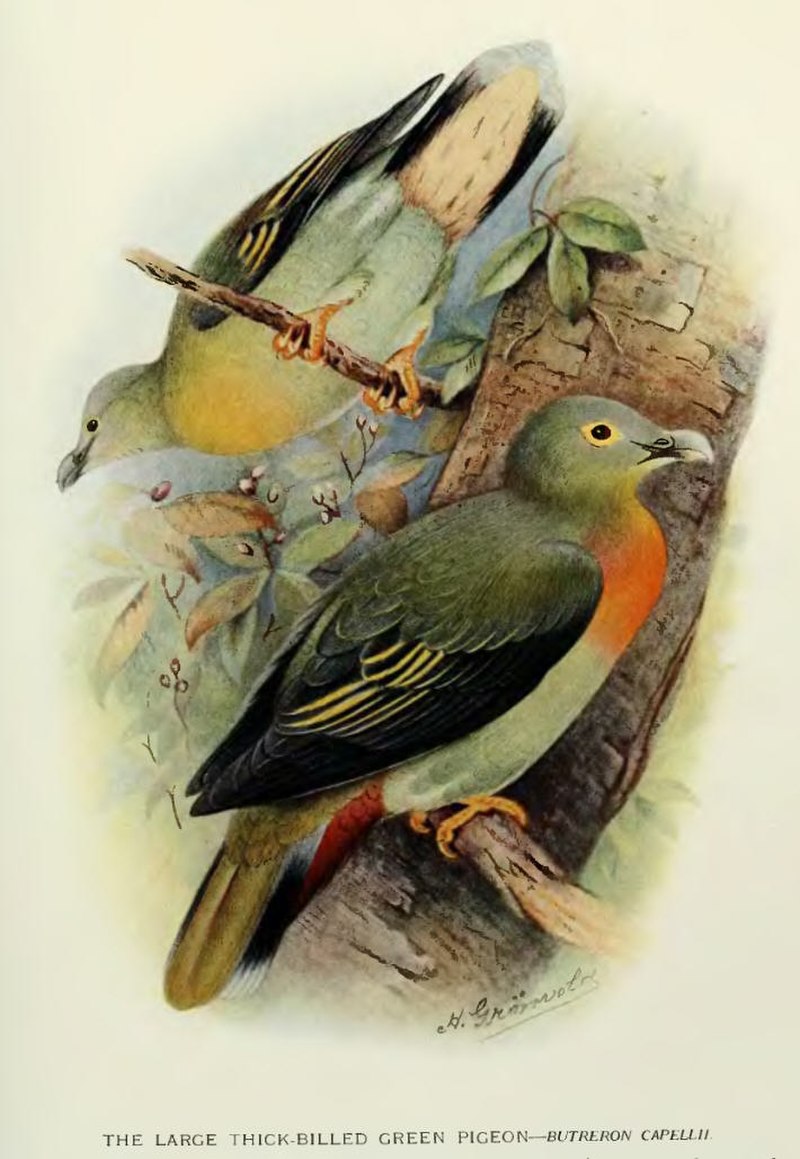
The large green pigeon is a species of bird found in Brunei, Indonesia, Malaysia, Myanmar and Thailand. It inhabits lowland forests and its population across Southeast Asia stands between 15-30 thousand individuals.
This species has experienced significant habitat loss due to deforestation which poses the greatest threat to their conservation status as well as causing fragmentation of existing populations.
The diet of this species consists mainly of fruits such as figs but they are also known to eat some flowers and buds at times.
They form small flocks when foraging on fruit trees or drinking from sources like streams or waterholes during dry season months.
Conservation efforts should focus on protecting their natural habitats so that these birds can continue thriving in our region for years to come.Scientific classification:
| Kingdom | Animalia |
| Phylum | Chordata |
| Class | Aves |
| Order | Columbiformes |
| Family | Columbidae |
| Genus | Treron |
| Species | T. capellei |
Also Featured In: Common Birds of Indonesia,
18. Yellow-Crowned Barbet
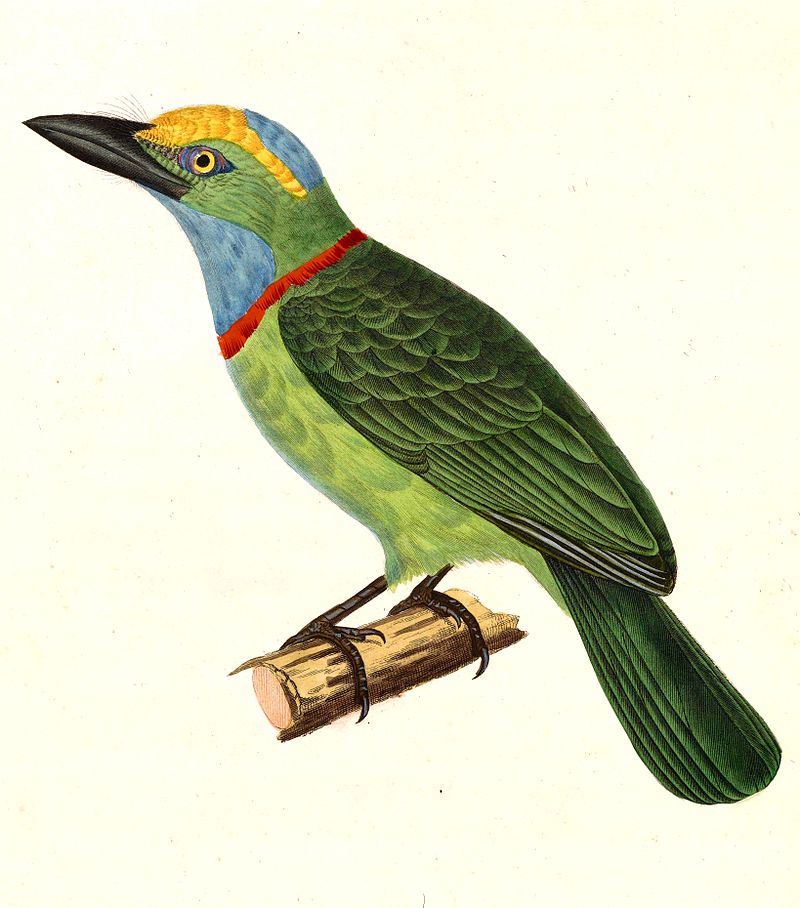
The Yellow-crowned barbet is a species of bird found in Brunei, Indonesia, Malaysia, Singapore and Thailand. It lives primarily in subtropical or tropical moist lowland forests and swamps.
This small bird has yellow feathers on its head as well as distinctive red blotches around the eyes and beak.
Unfortunately it’s habitat is threatened due to deforestation which could put this species at risk of extinction if not addressed soon enough.
Conservation efforts are needed to help protect these birds from further disruption to their natural environment so that future generations can enjoy watching them for many years to come.Scientific classification:
| Kingdom | Animalia |
| Phylum | Chordata |
| Class | Aves |
| Order | Piciformes |
| Family | Megalaimidae |
| Genus | Psilopogon |
| Species | P. henrici |
19. Red-Naped Trogon
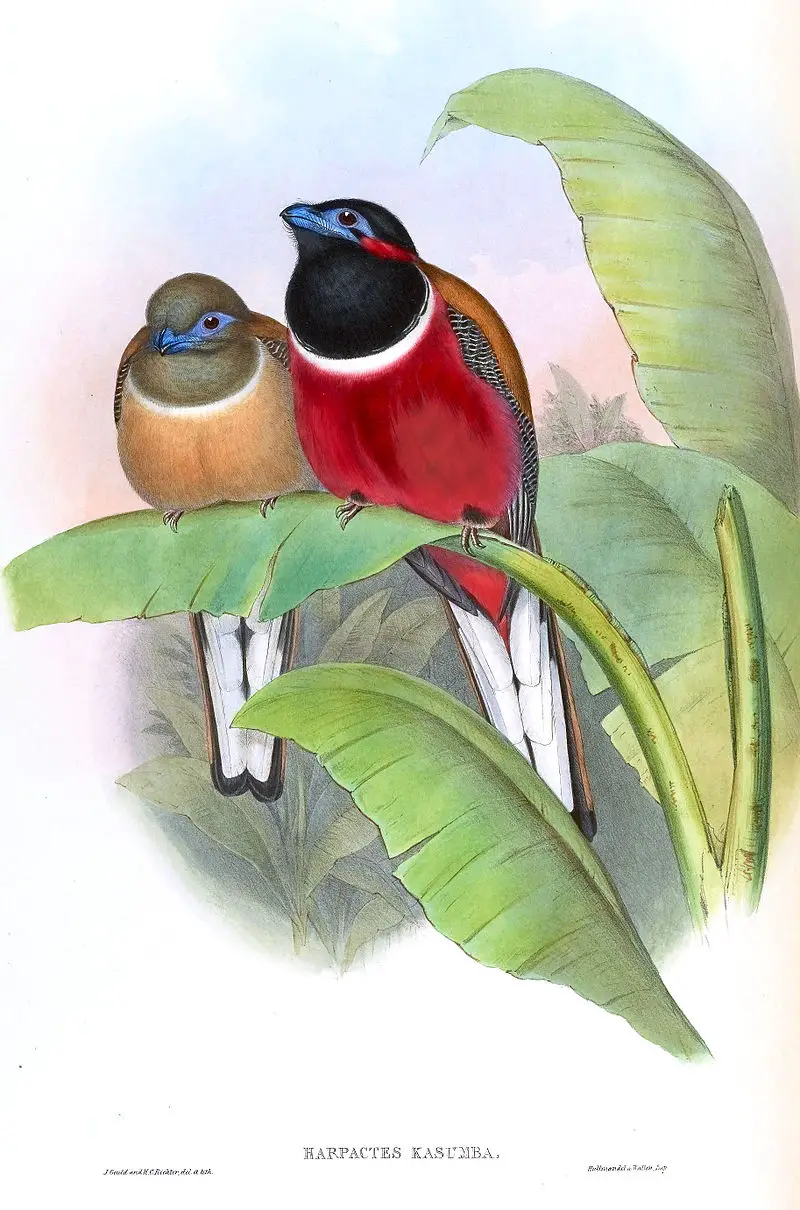
The Red-naped Trogon is a colorful species of bird found in Brunei, Indonesia, Malaysia and Thailand. It lives in lowland forests that are subtropical or tropical with moist climates.
This majestic creature has been threatened due to the destruction of its natural habitat caused by human activities such as deforestation and land development.
This iconic trogon was discovered back in 1822 by Sir Stamford Raffles who was known for his work setting up Singapore during this time period.
The red-naped trogon features an eye catching combination of colors which include yellow on its underparts, black wings and tail feathers as well as a vibrant red patch at the base of its neck giving it some extra flair.
It inhabits mid elevation evergreen forest from sea level up to 1 km altitude where it feeds mainly on insects but may also consume small fruits when needed too.
As one could imagine these birds are quite sensitive to alterations made within their environment so conservation efforts have begun focusing on preserving remaining habitats while restoring damaged sites whenever possible too.Scientific classification:
| Kingdom | Animalia |
| Phylum | Chordata |
| Class | Aves |
| Order | Trogoniformes |
| Family | Trogonidae |
| Genus | Harpactes |
| Species | H. kasumba |
20. Sulids
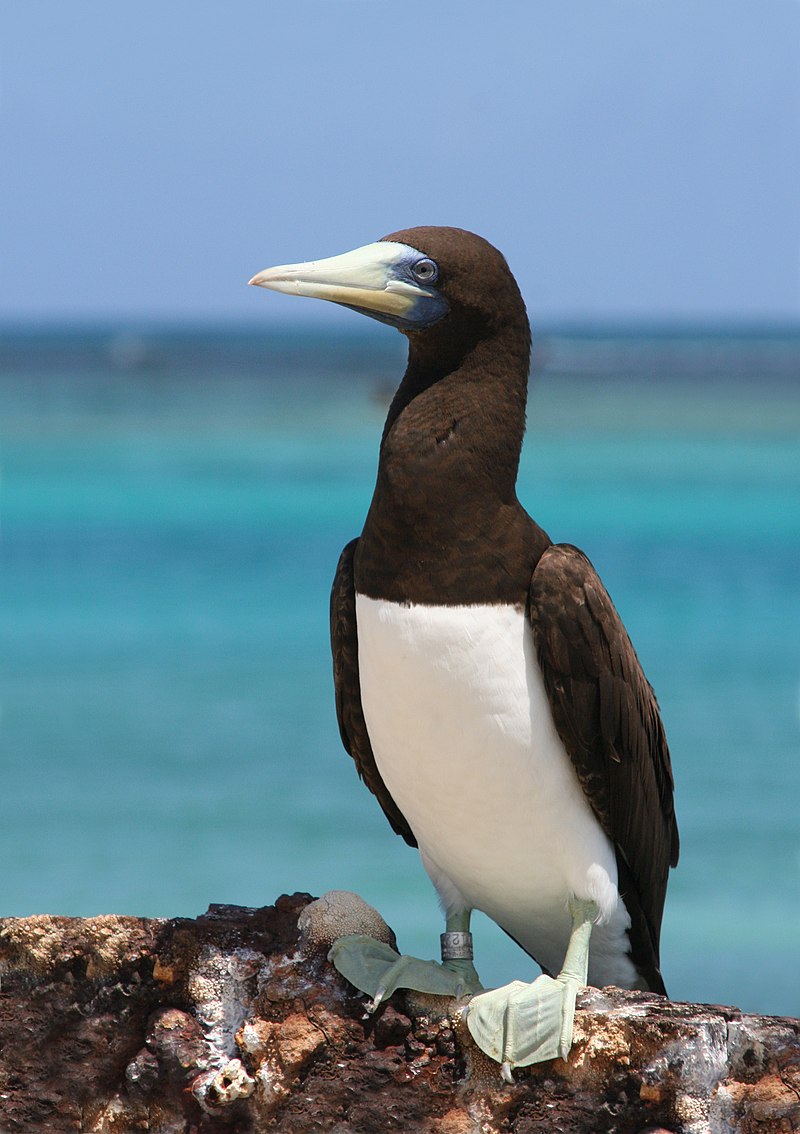
Sulids are a medium-large family of coastal seabirds that includes both gannets and boobies. They hunt by diving into the water to catch their prey, such as fish, squid or crustaceans.
These birds have long wings which they use to soar gracefully while searching for food. Sulids also possess webbed feet and strong beaks designed for snatching up prey from below the surface of the sea.
Members of this family vary in size; some species can grow over 3ft tall with a wingspan reaching 5 ft. The 10 different species all belong either to Sula (boobies) or Morus (gannets).
It’s easy to tell them apart due to differences in colouration, behaviour and DNA sequences between each type.
In summary, sulids are impressive hunters who plunge dive after food at sea but still manage remain graceful aviators despite their large size.Scientific classification:
| Kingdom | Animalia |
| Phylum | Chordata |
| Class | Aves |
| Order | Suliformes |
| Family | Sulidae Reichenbach, 1849 |
21. Stilts And Avocets
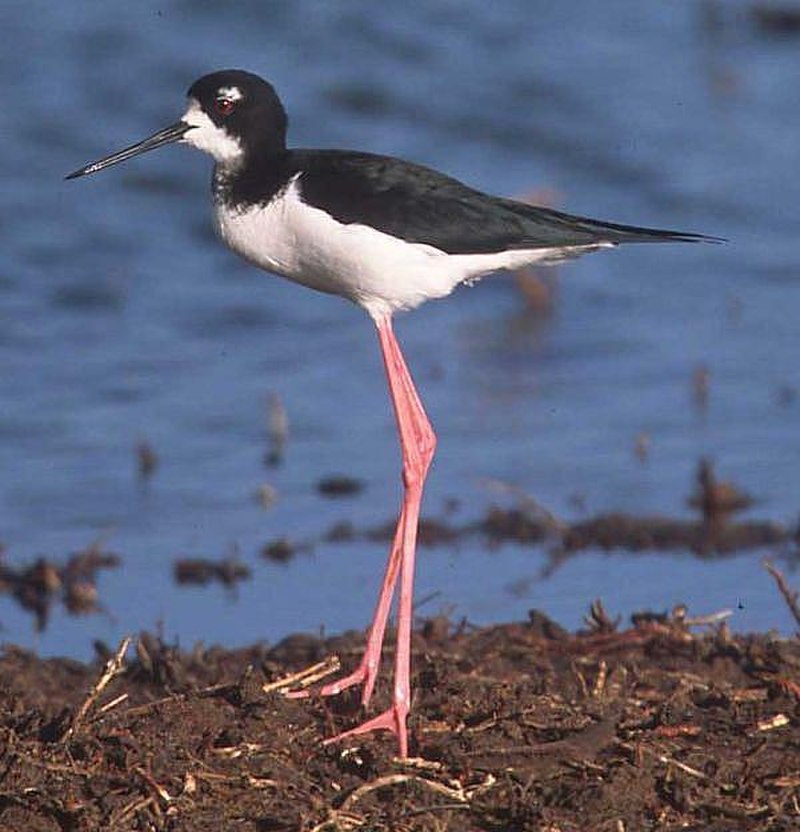
Stilts and avocets are two distinct groups of birds belonging to the family Recurvirostridae. They range in length from 30-46 cm (12-18 inches) and weigh between 140 – 435 g (4.9 – 15.3 ounces).
Males usually have slightly larger bodies than females, with long thin legs, necks and bills.
Avocet bills curve upwards uniquely while stilt beaks remain straight most times.
These wading birds live mainly near shorelines or wetlands where they feed on aquatic invertebrates like brine shrimp, insects etc., occasionally supplementing their diet with seeds or small fish too.
Stilts also inhabit open fields in search of food sources such as earthworms or grasshoppers during the non-breeding season.
Both groups migrate over large distances for warmer weathers when it gets cold outside.Scientific classification:
| Kingdom | Animalia |
| Phylum | Chordata |
| Class | Aves |
| Order | Charadriiformes |
| Suborder | Charadrii |
| Family | Recurvirostridae Bonaparte, 1854 |
22. Oriental Magpie-Robin
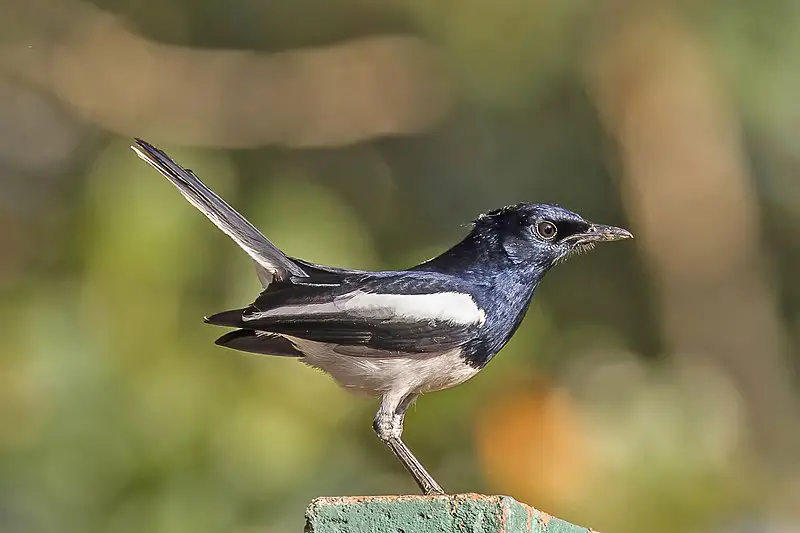
The Oriental magpie-robin is a beautiful passerine bird found across the Indian subcontinent and parts of Southeast Asia.
It can be easily identified by its black and white plumage, long tail that it holds upright while perched or foraging on the ground.
They are known to sing melodiously which makes them popular as cage birds in many countries.
These birds feed mainly on insects but also consume fruits, berries and nectar from flowers during certain times of the year.
Their population numbers have been declining due to destruction of their natural habitats like deforestation.
However, conservation efforts have seen some success in recent years with more areas being set aside for protection and preservation.Scientific classification:
| Kingdom | Animalia |
| Phylum | Chordata |
| Class | Aves |
| Order | Passeriformes |
| Family | Muscicapidae |
| Genus | Copsychus |
| Species | C. saularis |
23. Greater Coucal
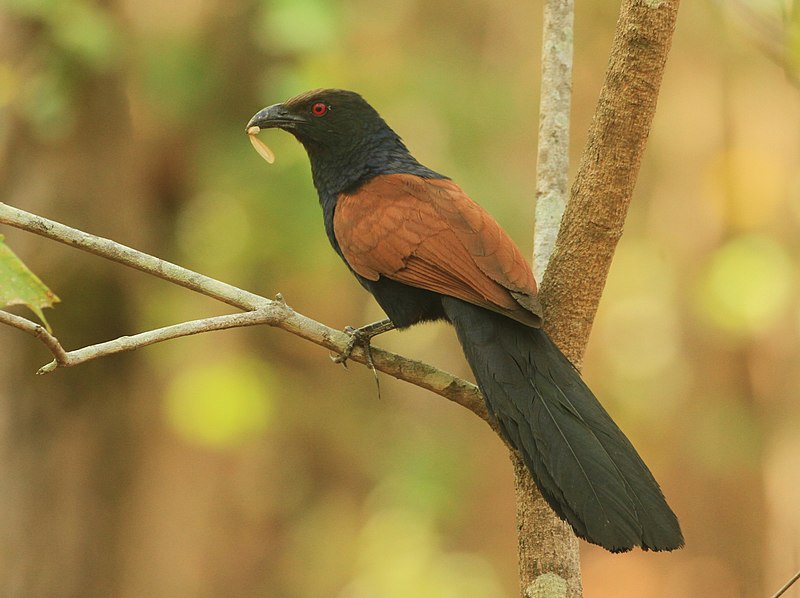
The Greater Coucal is a large, crow-like bird that belongs to the Cuculiformes order. It has a long tail and coppery brown wings.
These birds are found in many habitats across India and Southeast Asia, ranging from jungles to suburban gardens.
They feed on insects as well as small vertebrates such as frogs, lizards or snakes which they capture with their strong beak.
The males have glossy black plumage while females are dark brown above with buff underparts.
During breeding season these birds make loud croaking calls and can often be heard at night when they become active after sundown looking for food sources like termites or grasshoppers between bushes or low branches of trees close by water bodies like rivers, lakes etc.
This species plays an important role in maintaining ecological balance in its habitat by controlling pest populations through predation so it is essential that we protect them from hunting and other threats for future generations to enjoy.Scientific classification:
| Kingdom | Animalia |
| Phylum | Chordata |
| Class | Aves |
| Order | Cuculiformes |
| Family | Cuculidae |
| Genus | Centropus |
| Species | C. sinensis |
24. Pacific Swallow
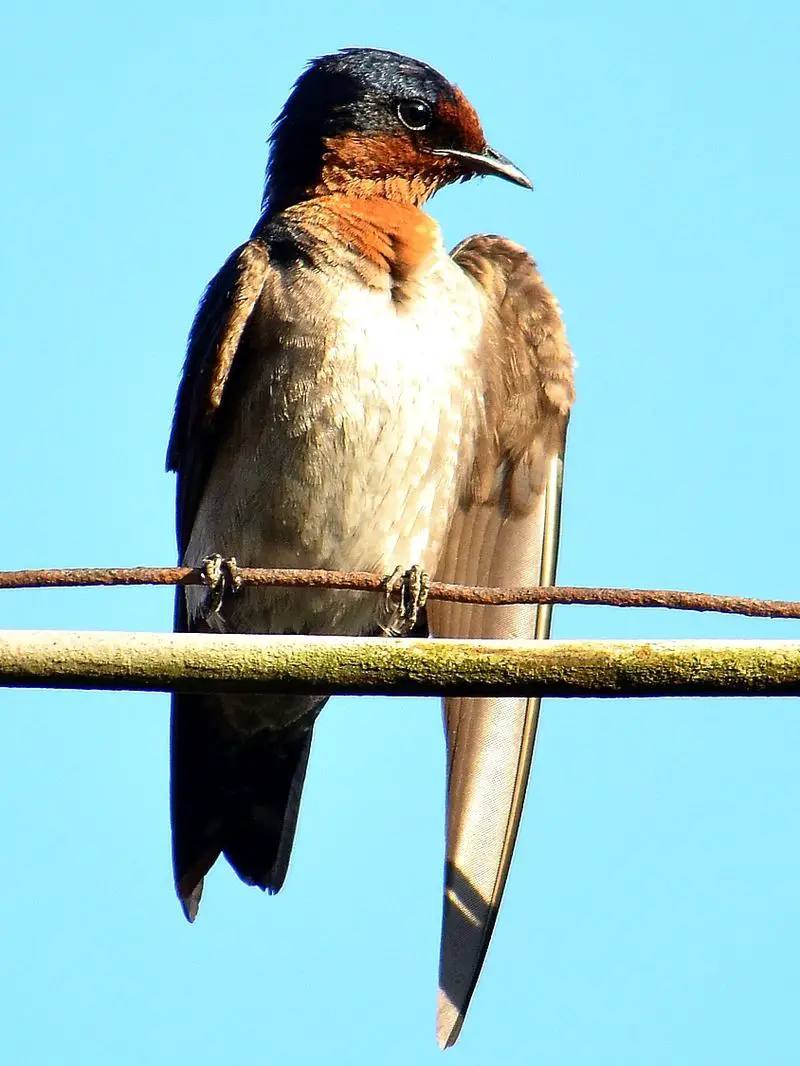
The Pacific Swallow is a small bird with glossy blue-black upperparts and white underparts. It has a short, forked tail and wings that are pointed at the tips.
This swallow typically breeds in tropical southern Asia and the islands of the south Pacific Ocean, although it is becoming more common on forested uplands away from coasts.
During breeding season they construct cup or saucer shaped nests made out of mud pellets in sheltered areas such as rock crevices, eaves or tree hollows.
The diet consists mostly of flying insects which they catch while flying low over water bodies like lakes or rivers during their migratory flights between nesting sites to feeding grounds.
They often travel together in flocks when migrating long distances but can sometimes be seen alone chasing after prey midair.Scientific classification:
| Kingdom | Animalia |
| Phylum | Chordata |
| Class | Aves |
| Order | Passeriformes |
| Family | Hirundinidae |
| Genus | Hirundo |
| Species | H. tahitica |
25. Yellow-Vented Bulbul
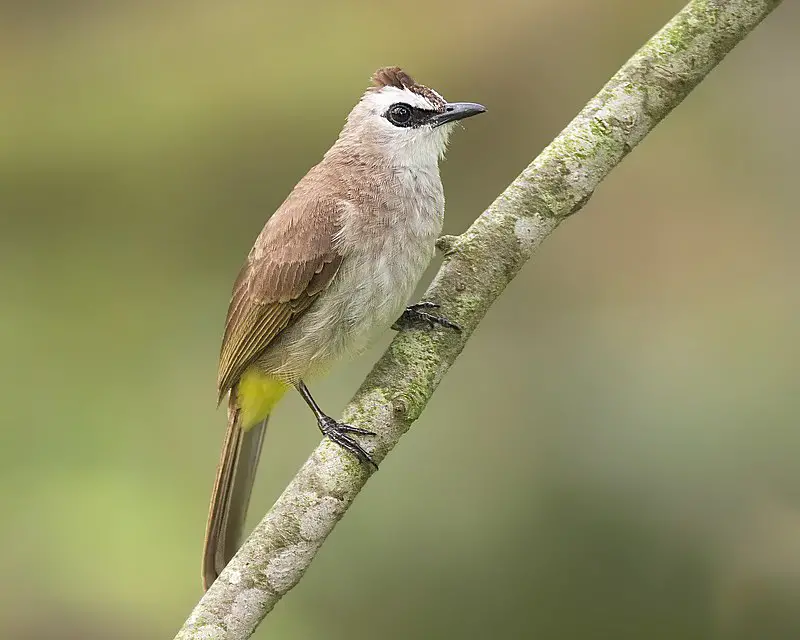
The Yellow-vented Bulbul is a stunning passerine bird from southeastern Asia, with its bright yellow and black plumage. It breeds in open habitats such as cultivated areas, but rarely enters deep forests.
They tend to be nomadic, wandering around and searching for food sources. During the breeding season they form pairs and build their nests at least two metres above ground level in trees or shrubs.
The female lays 2–4 eggs which are incubated by both parents over 13–14 days before hatching into chicks that fledge after 16–17 days of nestling stage..
These birds feed mainly on fruits or berries found in gardens or fields; insects like caterpillars may also make up part of their diet.
As beautiful as it looks, this species has a loud call which can become quite irritating if heard frequently.Scientific classification:
| Kingdom | Animalia |
| Phylum | Chordata |
| Class | Aves |
| Order | Passeriformes |
| Family | Pycnonotidae |
| Genus | Pycnonotus |
| Species | P. goiavier |